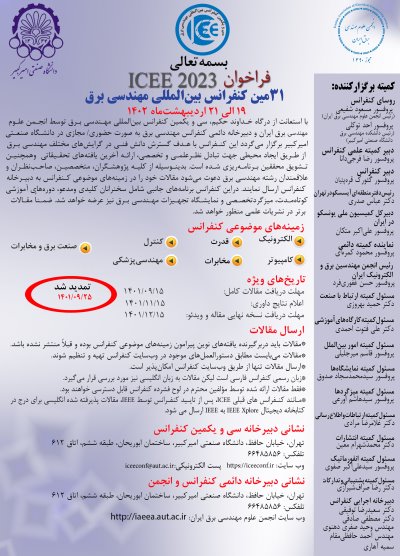0% Complete

نویسندگان :
کلمات کلیدی :
چکیده :
لیست مقالات بایگانی شده
Seyed Vahid Moravvej - Mohammad Javad Maleki Kahaki - Moein Salimi Sartakhti - Abdolreza Mirzaei
Marzieh Chegini - HojjatAllah Nemati - Mahmoud Kamarei
Kayvan Qolami - جواد یاوندحسنی
Hamed Delkhosh - Hossein Seifi - Sajjad Gholamnejad - Morteza Yousefian
Mahdi Rahimi - Fatemeh Jahanbani Ardakani - Ali Reza Rahimi
Payam Loloei - S.hossein Hosseinian
Mahdieh Esmaeiliporzani - Zahra Atlasbaf
Hossein Ahmadian - Iman Sharifi - Heidar Ali Talebi
Keyvan Tayaranian Marvian - Amir Hossein Nazari - Seyed Mohammad Tahamipour Zarandi - Mohammad Reza Akbarzadeh totonchi - Zahra Soltani - Alireza Akbarzadeh totonchi
Mohammad Hossein Shaabani - Behrooz Vahidi - Navid Dehghan




